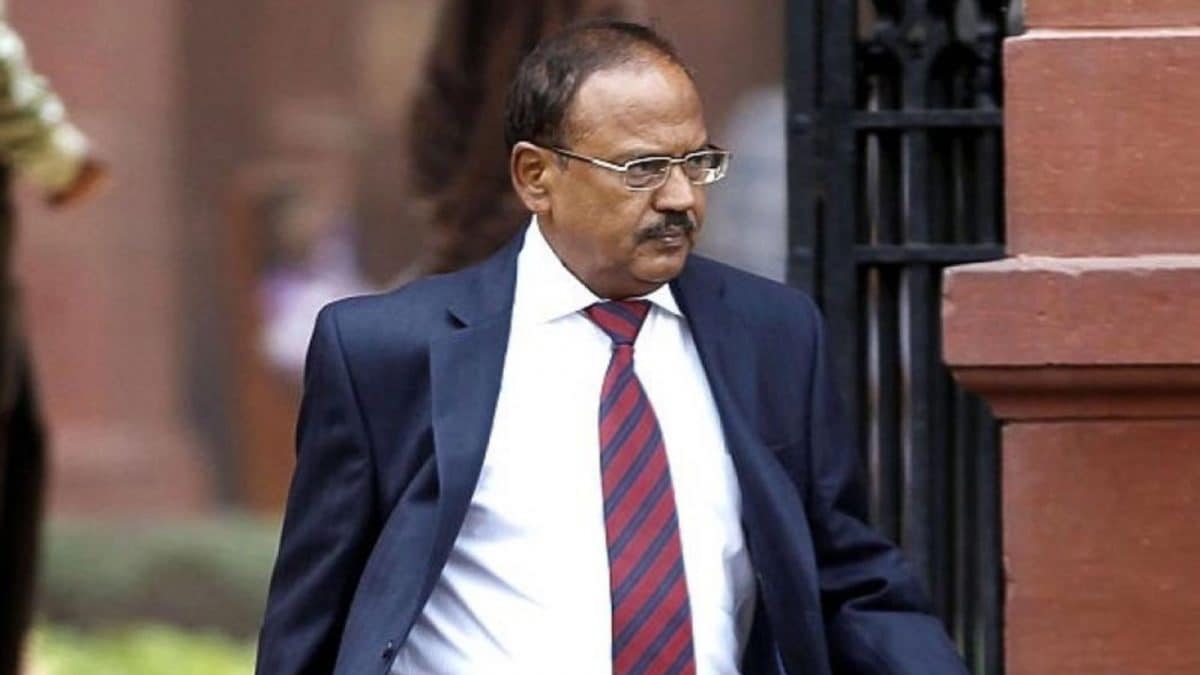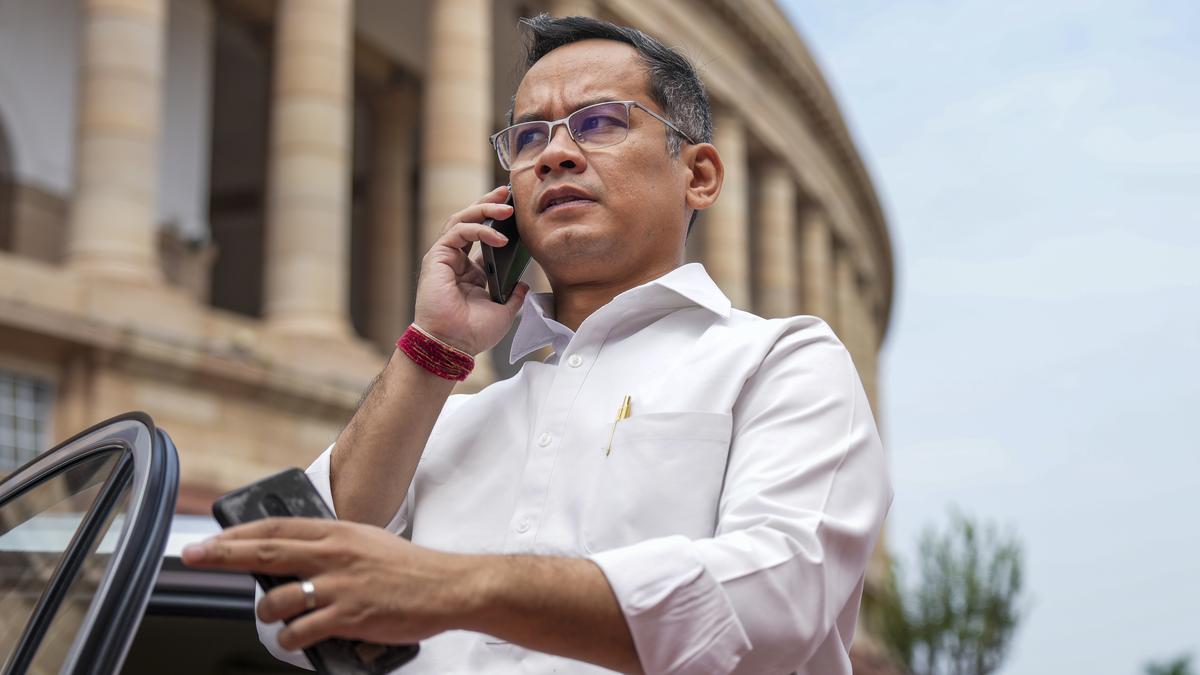Bengaluru East City Corporation is the richest among the five new civic bodies under the Greater Bengaluru Authority, and contributes the highest tax revenue. It covers the largest area —168 sq. km. — but has the smallest population of 13 lakh (1.3 million), resulting in the lowest population density among the new corporations, at 7,738 persons per sq. km.
But, the corporation includes one of Bengaluru’s most congested corridors — the 17.3 km stretch of Outer Ring Road (ORR) between K.R. Puram and Central Silk Board. The congestion stems from a large floating population and limited infrastructure.
About 500 tech companies operate along this stretch, with eight to 10 lakh employees using the ORR daily, putting it among the Top 5 most congested routes in Bengaluru. Originally designed to handle 4,800 Passenger Car Units (PCUs), the road now carries about 10,400 PCUs, more than double its intended capacity, according to ASTraM data reviewed by The Hindu. This overload has drastically increased travel time. A 10-km commute can take over an hour, sometimes nearly two.
Congestion on the stretch and the bad condition of the road has sometimes led to face-offs between tech honchos and the ruling dispensation. The most recent spat involved Deputy Chief Minister D. K. Shivakumar, who also holds charge of the city, which began after a logistics company co-founder announced relocating out of the stretch.
What went wrong?
IT firms along the ORR witnessed unprecedented growth after 2002, when the corridor became fully operational. Each year brought an increase in the number of commuters using the stretch, placing additional strain on an already fragile infrastructure. Multiple choke points and the ripple effects of congestion further worsened traffic on the connecting roads.
Karthik Reddy, Joint Commissioner of Police (Traffic), pointed out that there are very few connecting roads to the ORR, and that most of them are old, narrow, and located in panchayat areas lacking proper planning.
Mr. Reddy compared the ORR area with Jayanagar, highlighting the absence of a road grid network that connects every part of the locality. In addition, the areas surrounding the ORR have critically low road density per sq. km.
Road density per sq. km. refers to the total length of all roads within a one square kilometre area. A density of about 20 km per sq. km. is considered healthy and sustainable. Greater road density allows vehicles to move between two points using multiple routes instead of depending on a single stretch.
Gopal M. Byakod, Deputy Commissioner of Police (South, Traffic), explained that Jayanagar has a road density of 25 km per sq. km., compared with only eight to 10 km per sq. km. in areas around the ORR.
According to available data, Whitefield records about 8 km of roads per sq. km., Sarjapur about 10–12 km, and Vijayanagar and the Central Business District (CBD) around 25–30 km per sq. km. Internationally, New York City, a metropolis with one of the highest population densities, has about 37 km per sq. km.
V. Ravichandar, member of the Brand Bengaluru Committee, observed that the Bengaluru administration focused on developing the ORR as a single strip while neglecting local area planning.
“Beyond the ORR strip, we should have notified land for at least one kilometre on either side of this stretch to create a broader zone for local area development, where road lengths and widths could be redrawn,” Mr. Ravichandar said, adding that connecting roads and slip roads could have been better planned.
While the linear development of the ORR spurred industrial growth, there was no corresponding expansion of residential areas. For instance, inexplicably Bangalore Development Authority (BDA) hasn’t developed a single layout in these parts of the city till date. As a result, employees were forced to commute from far-off places, adding more private vehicles to the stretch in the absence of efficient public transport.
Additionally, successive governments failed to develop an alternative employment corridor that could accommodate growing companies.
This long-standing neglect has now turned the notorious stretch into a political battleground, following an announcement by IT companies to end work-from-home arrangements from October 1, citing a drop in productivity.
What are the current problems?
A visit to the area reveals several choke points, especially along the service lanes. For instance, on the service lane near the Iblur Junction, metro construction work has completely halted vehicle movement. Near Devarabeesanahalli, roads are filled with vehicles trying to reach IT company campuses. At the Marathahalli and Mahadevapura junctions, the bylanes connecting to service lanes are heavily congested, as vehicles from houses and paying guest accommodations are parked on the roads, occupying much of the already narrow stretches.
The ripple effect of traffic from the ORR, combined with narrow connecting lanes, has become a major concern for commuters. Three key roads feed into the ORR in this zone — Doddakannalli–Bellandur Road, Ambalipura–Sarjapura Road, and Doddakannalli–Kadubeesanahalli Road via Devarabeesanahalli Road. All of these roads remain severely clogged during peak hours.
School buses are often stuck for hours on these routes. A class 11 student whose school bus travels via Doddakannalli Road, recalled how young children in her bus cry when trapped in traffic for hours, unable to reach home on time.
“When they need to use restroom, there are barely any options when we are stuck in traffic. For female students, especially during periods, it becomes extremely difficult to endure long journeys,” she said.
In the absence of any scientific or long-term solution to decongest the corridor, the Bengaluru Traffic Police (BTP) have introduced several short-term measures.
Traffic police action plan
Mr. Reddy told The Hindu that the police have identified 18 choke points that experience heavy congestion due to flaws in road design and infrastructure, leading to frequent crisscrossing conflicts.
“Along the stretch, there are multiple openings between the service lanes and the main carriageway. Vehicles from both sides try to use the same opening, which inevitably causes congestion due to crisscrossing,” he explained.
The police are now exploring ways to eliminate such technical flaws. In several areas, they have also introduced contra-flow traffic systems to ease movement on smaller, congested stretches.
While these steps are temporary, the police are simultaneously promoting carpooling among employees of the same company and encouraging the use of public transport to reduce the number of vehicles on the road. They are also examining short-term fixes for recurring design-related issues.
Fixing technical gaps
Mr. Byakod highlighted another issue. Skywalks that have exit points directly onto footpaths between the service roads and the main carriageway, forcing pedestrians to cross moving traffic and disrupt vehicle flow.
This design flaw, particularly near junctions such as Devarabeesanahalli, has created severe problems because skywalk exits placed on media between service lane and main carriageway.As a result, large numbers of employees use these exits, cutting across traffic near the junctions and triggering congestion.
Sahil Bagla, DCP (East, Traffic), told The Hindu that the placement of bus stops on the main carriageway is another major problem. “When a bus halts at a stop, it slows down the traffic behind it. If another bus tries to overtake, the congestion tail begins right there,” he explained.
In addition, work on multiple drains is being undertaken along the service roads on the 17-km stretch. These further reduce the usable road width, creating bottlenecks. The ripple effect carries onto the main carriageway when buses switch between the main road and service lanes. If a service lane is blocked, buses are forced to stop on the main carriageway, adding to the congestion.
To address these issues, the BTP has been introducing minor interventions such as closing entry points to service lanes near congested junctions and shifting pedestrian crossings slightly away from chronically jammed spots, and deploying more traffic personnel.
Is there a realistic solution?
A senior police officer told The Hindu that the department had approached several IT companies with proposals to ease congestion by allowing vehicle movement through their campuses. However, the companies refused.
“In the absence of land for road expansion, if the companies had permitted vehicles to pass through their campuses, we could have de-congested many bottlenecks. But none of them agreed,” the officer said, adding that the companies only needed to open small sections of their side driveways, yet they declined.
When asked about the reluctance, a representative of the Greater Bengaluru IT & Companies Association (GBITCA) cited ‘safety concerns’ for the campuses. He further noted that the problem was a broader infrastructure issue requiring coordination among multiple government agencies, not just the companies.
Mr. Ravichandar suggested a multi-pronged strategy to ease congestion along the Outer Ring Road (ORR). The foremost solution, he said, is to retrofit a proper street grid, which would require land acquisition to create parallel and connecting roads, effectively doubling the current road density.
In the absence of available land, he proposed that IT campuses should become more porous by allowing public roads to pass through their premises while maintaining building-level security. “This could be the only viable way to retrofit the road network and create more grids,” he said.
“IT firms should charge for parking and promote carpooling, bike taxis, and staggered work hours. Public transport must be strengthened with frequent metro shuttles, suburban rail links, and improved bus services,” Mr. Ravichandar added.
A government source told The Hindu that during a high-level meeting, the Bengaluru Traffic Police (BTP) had suggested levying parking charges within company premises to encourage employees to use public transport. The companies, they said, could even redirect the collected charges as employee incentives.
“No one agreed to the proposal. Instead, one of them suggested imposing a congestion tax, which the government rejected outright,” the source said.
Krishna Kumar Gowda, General Secretary of GBITCA, argued that IT companies already contribute through services and taxes, and it is not their responsibility to provide commuting infrastructure.
“Companies cannot alter their internal policies to accommodate such measures. It would strain their relationship with employees,” he said.
With this option off the table, three alternatives remain: expediting the Blue Line metro construction, increasing the bus fleet, and upgrading existing infrastructure.
Infrastructure works afoot
BMTC feeder buses operate frequently between the K.R. Puram metro station and Marathahalli, making around 210 trips per day. Additionally, 2,382 regular bus trips are made across the stretch. Yet, the number of private vehicles has remained unchanged.
The Blue Line metro (Phase 2A), initially scheduled for completion in 2024, has been delayed by two years. Yeshwanth Chavan, Chief PRO of BMRCL, told The Hindu that the Blue Line is now expected to open by the end of 2026. “There were several challenges, including construction site constraints, moving girders along the stretch, and delays in obtaining permissions. However, work is now in full swing,” he said.
R.K. Mishra, Independent Director of BSMILE, said that the Detailed Project Report (DPR) for revamping ORR, at an estimated cost of ₹450 crore, is ready and awaiting government approval. “Once approved, the work will begin within two months,” he said.
“We have prioritised bus priority lanes to ease the load on the main carriageway, which is a practical alternative to road widening in the absence of available land. We’ve also planned cycling lanes and addressed all unscientific design issues along the stretch,” Mr. Mishra said.
However, both projects are expected to take more than a year to complete. Even after completion, BMRCL estimates that about 1.5 lakh commuters will use the Namma Metro along this stretch. With the implementation of bus priority lanes, another 1.5 lakh commuters could shift to public transport. Yet, around five to six lakh people are expected to continue using private vehicles, far exceeding the road’s original carrying capacity.
While these may be potential solutions, the government is also exploring the relocation of companies, a move that the IT industry has resisted. Civic activists believe that both the government and IT companies must come together to find common ground.

 6 hours ago
4
6 hours ago
4








 English (US) ·
English (US) ·